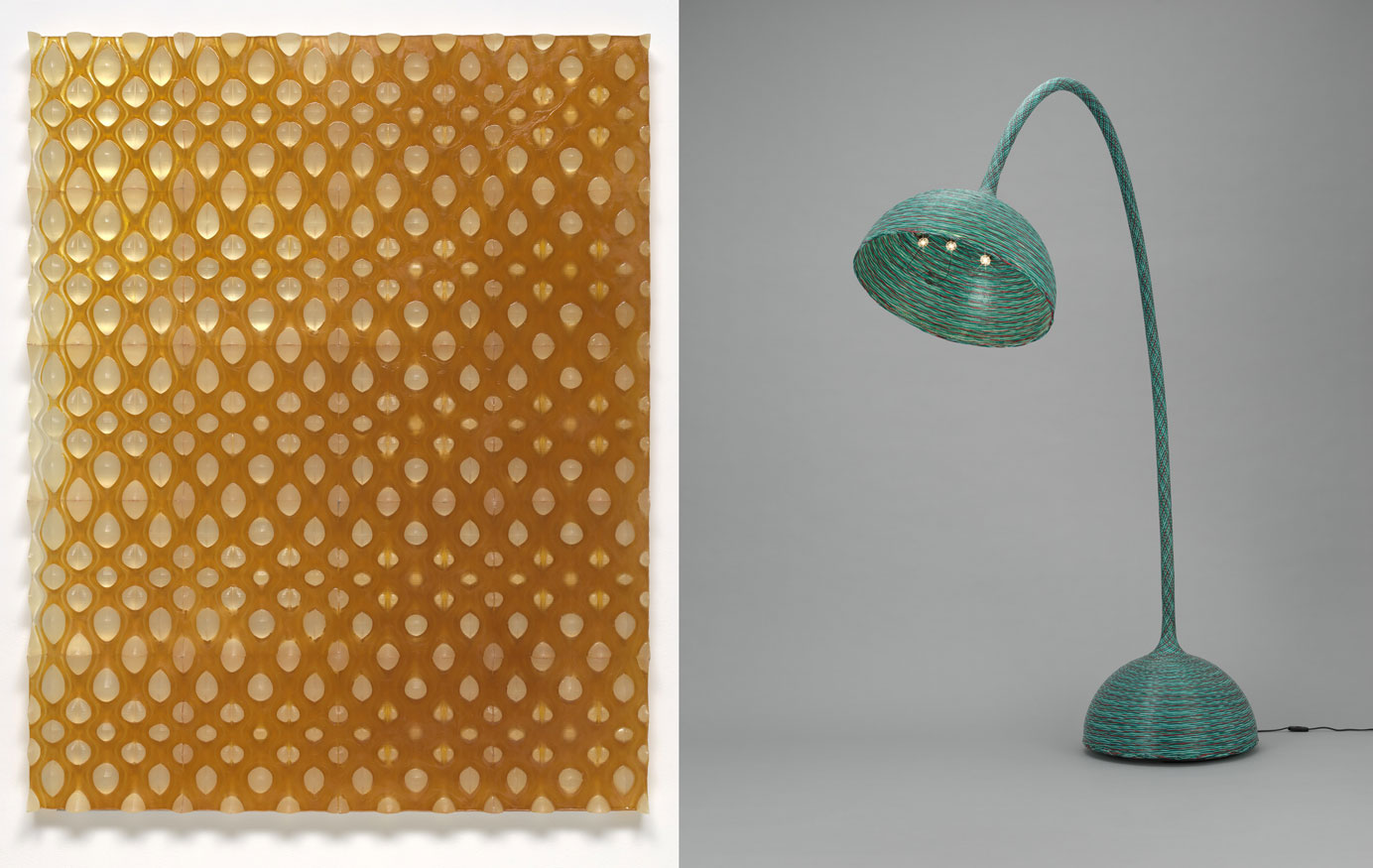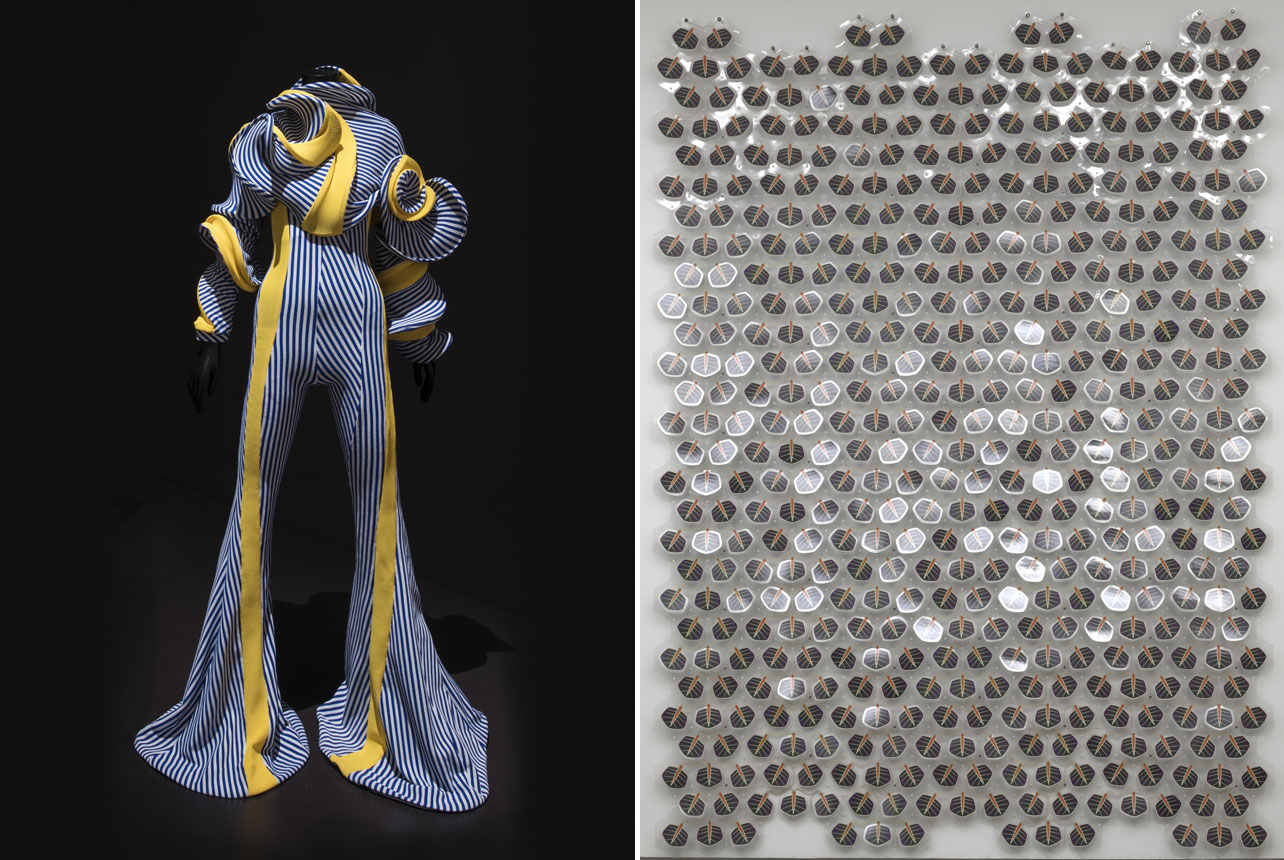ART CITIES:N.York-Energy
 Energy, speaks to the impact power has had across generations, and how it holds different weight in our current age of climate collapse. “Energy speaks to both the 20th and the 21st Centuries, there’s just a different attitude. In the 20th Century it was about discovering sources of energy, using them, and creating more and more powerful objects that would use more and more energy—it was this idea of infinite energy. In the 21st Century, we’re aware of how finite it is, we’re aware of how much we are wasting, we’re aware of how ill-distributed it is. So we are more aware of our responsibility.
Energy, speaks to the impact power has had across generations, and how it holds different weight in our current age of climate collapse. “Energy speaks to both the 20th and the 21st Centuries, there’s just a different attitude. In the 20th Century it was about discovering sources of energy, using them, and creating more and more powerful objects that would use more and more energy—it was this idea of infinite energy. In the 21st Century, we’re aware of how finite it is, we’re aware of how much we are wasting, we’re aware of how ill-distributed it is. So we are more aware of our responsibility.
By Efi Michalarou
Photo: MoMA Archive
The works presented in the exhibition “Energy” engage with energy in its myriad forms, from thermal and kinetic to electrical and even reproductive. They represent its sourcing, deployment, consumption, and preservation. They showcase the technological advancements of the past decades, while proposing alternatives for a future in which resources might not be as readily available. Massoud Hassani’s “Mine Kafon wind-powered deminer” (2011) is designed to roll across the ground, detonating land mines in the process. In Qasaba, Afghanistan, Hassani’s hometown, leftover mines, remnants of conflicts, often injure or kill civilians. When the deminer blows across a minefield, exploding any ordnance present, it reclaims the space as safe and usable. At about 70 kilograms the deminer is approximately the weight of an average human adult. It is constructed modularly: when it detonates a mine, only a few of its 175 bamboo arms are blown off, allowing it to complete multiple detonations before needing repairs. When repairs do become necessary, a GPS chip embedded in the device’s core guides the deminer along a safe path out of the field. Components are made from biodegradable materials, so unsalvaged pieces do not further pollute the environment. The design was inspired by the wind-powered racing toys that Hassani and others from his hometown built as children. Since first developing the deminer during his studies at Design Academy Eindhoven in the Netherlands, Hassani has continued to pursue efficient solutions to the problem of land mines. He field-tests iterations of the Mine Kafon deminer with the support of the Dutch Ministry of Defense and has released a set of freely accessible instructions for creating your own from discarded materials like tires or oil canisters. Revital Cohen, Tuur Van Balen “75 Watt” (2013): Inspired by a finding in the Marks Standard Handbook for Mechanical Engineers (that a laborer over the course of an 9-hour day can sustain an average output of about 75 watts) Cohen and Van Balen set out to explore the nature of mass-manufactured products by shifting the purpose of the laborer’s actions from the efficient production of objects to the performance of choreographed acts. The designers worked with choreographer Alexander Whitley to create an assembly line dance that took place at the White House Electric Factory in Zhongshan, China. By placing attention on the process instead of the result, the designers sought to spark a debate about how objects, politics, and the global economy can boil down to the energy output of one human body. Richard Malone “Jumpsuit Specimen” (2017): Malone grew up in rural Ireland and identifies strongly with his working-class roots. For this piece, he was inspired by the functional clothing worn in construction sites. Looking into historical jumpsuits that were assembled from one piece of cloth, Malone employed a recycled stretch-acrylic fabric found in a factory near his studio in London, which he steamed, split, and sculpted. The result is a one-size-fits-all unisex garment that alludes not only to the jumpsuit’s rich history in labor, but also to a future in which garments and fabrics are reused and recycled. Wieki Somers “Bellflower Lamp” (2007): The Lamp is woven from one strand of fiber, with a combination of high-tech carbon and glass fiber braiding techniques. The base, arch, shade, and electric cables are all woven in one production line through “overbraiding,” a process developed for the aerospace industry. To counterbalance the complexity of the manufacturing process, Somers has given the lamp a delicate flower shape. Over the past decades, architects have been studying the possibility of creating dynamic buildings that adapt to changing environmental conditions and levels of occupancy. With this task in mind, Neri Oxman coined the term “material ecology” and advocates for products and buildings to be designed as living, interactive entities—environmentally informed, computationally grown, digitally manufactured, and biologically augmented. The surface of “Cartesian Wax”, from the Materialecology project (2007) is thickened locally when more structural support is needed, and modulates its transparency according to the light conditions of the environment. The work is inspired by Descartes’s Cartesian Wax thesis,” explains Oxman, “which relates to the construction of self knowledge and the way it is informed by and reports on an individual’s experience of the physical world. In 1955 in Lebanon, “one-third of a worker’s salary was spent for fuel . . . while from 8 to 9 months a year the sun shines all day,” said Dr. Adnan Tarcici. A professor, designer, and United Nations delegate, Tarcici dedicated his life to solar energy and has numerous patents for solar-cooker designs under his name. The “Solnar Tarcici Collapsible Solar Cooker” (c.1970) collapses into a portable box that also serves as its spine. Samuel Cabot Cochran, Benjamin Wheeler Howes’s “GROW” (2005) is a hybrid wind and solar energy delivery device that uses film photovoltaics with piezoelectric generators; it converts sunlight into electricity while also transforming mechanical energy into electrical energy. Its organic and dynamic form replicates climbing ivy, and its “leaves” are flexible photovoltaic panels. The leaves catch sunshine to generate solar power; their fluttering generates wind power. Due to its light weight, this device can be easily mounted on vertical surfaces such as building façades to produce energy. The designers use recycled and reclaimed materials wherever possible, and, “GROW’s” lifespan and sustainable methods will minimize its environmental footprint.
Info: Curator: Paola Antonelli, Assistant Curator: Anna Burckhardt, MoMA (Museum of Modern Art), 1 West 53 Street, Manhattan, New York, Duration: 21/10/19-26/1/20, Days & Hours: Mon-Thu & Sat-Sun 10:00-17:30, Fri 10:00-21:00, www.moma.org






